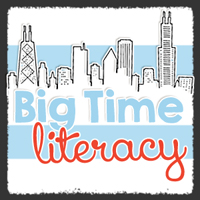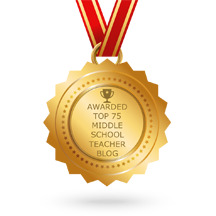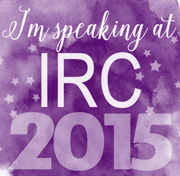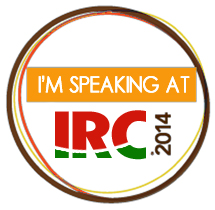We just finished up a short week and I wanted to share and reflect on it with you!
Pineapple Chart
This has been a long time coming, but it finally launched this Wednesday!
The Pineapple Chart concept is from Mark Barnes and Jennifer Gonzalez who wrote Hacking Education. It's a way to invite teachers to your classroom in a space (our lounge) that everyone hangs out. Then, teachers can check out classes that are on the chart.
We just launched it on Wednesday, and there were four teachers to put up an invitation - to a band class (trumpets!), Math Class, to see a cool app called Class Kick, a Social Studies Class to see a learning platform called Summit, and my ELA class to see Quick Writing.
What's awesome about the Pineapple Chart is that there's no subs involved, no paperwork, no formal reflections - just teachers visiting one another's classrooms to learn and collaborate together.
I visited the math class to see Class Kick and the app was super cool, but it's also cool to just be in another teacher's room to see how the students interact, to see how they organize and structure their class, to talk to kids, and 100 more reasons!
I highly suggest this form of on-demand, personalized PD - check out Hacking Education for this great Hack, and so many others! (My next project is Teacher Quiet Zone!)
Quick Writing
I've been doing Quick Writing for about 6 weeks now and it's making such a difference in the kids stamina for writing. (Check out the details here.) We are about to launch our first writing unit, and I know the Quick Writing will lend itself to the writing they will do for me coming up! I'm just so proud to see kids really getting to business with their writing, this example was just about 7 minutes worth of writing! This strategy helps kids get out of their head, stop the writer's block, and just let thoughts flow on to paper, because we know that the real writing lies in revision.
Progress Reports
One area I've been struggling is communicating grades with parents. Like, I have grades in my book, but I am not super sure how to use our online management system and so until yesterday, I hadn't done much of that. I tell you this not so you'll be judgy, but because what I'm learning as a teacher and coach is that it's so hard to do everything. The last few years when I was just a coach, I would attend meetings, and to me, it seemed simple the plans that we would make for instruction. But then there's assemblies, and shortened schedules for PBIS kickoffs, and days off, and then there's a day or two when none of your students do their homework, so the plan that you've created, it doesn't go as you had envisioned.
But then something amazing happens anyways, and I'm so mad I didn't snap a picture of this - my kids doing self-reflection on their progress reports.
We have moved to Standards Based Grading. I like it. So I created progress reports for kids, where I had it broken down into seven categories, listing the scores I had recorded for kids. Then, I asked them to reflect on scores, share something they're doing well in each area, and also something they need to improve. And I had them spend about 20 minutes on self-reflection, using my notes and grading themselves. And it was amazing.
Kids made comments like,
- "I need to study my vocabulary more."
- "I need my handwriting to be neater."
- "I should share my ideas with people I sit with more."
- "I wasn't taking this seriously, but now I will."
- "I need to be kinder to others in my class."
- "I have a lot of tardies, I need to come on time." (Side note: yesterday this student *was on time!)
I have always been a reflective teacher (like, here on the blog) but I am going to make this self-reflection for students an ongoing process. Oh, and then my principal (who initiated this whole idea for me) shared how I could take it to the next level - have parents rate themselves for things at home like,
- My child gets 8 hours of sleep a night.
- My child eats a good breakfast each morning.
- My child reads 20 pages of their book each night at home.
- My child has routines and a quiet space to work on homework.
- Electronic devices are turned off at 9pm each night.
- Electronic devices are kept out of my child's bedroom, especially after 9pm.
This kind of rating and reflection on behalf of the family seems like a great reminder for all involved, and really creates that space for teachers, students, and families to do the work together!
Award Nomination
Finally, pretty cool that someone nominated me for a Golden Apple Award:
I got this last Friday and at first thought it was junk mail, but upon further examination and research, it is legit. This is an award for teachers in Illinois, in a few of the counties around where I live. This year, it's for 4th-8th grade teachers. Winners receive
- A paid spring quarter sabbatical to study tuition-free at Northwestern University
- Induction into the Golden Apple Academy of Educators
- A cash award of $5,000
- Recognition on an hour long Awards ceremony program on WTTW/Channel 11 in May 2017
I have no idea who nominated me - I asked some people at work and a friend who is a Golden Apple Scholar, but have not figured that out, but I am super thankful and honored someone thought of me!
That's about all for this week! I really enjoy sitting down to write and am so thankful blogging and writing is a consistent part of my life! Have a fab weekend, I'm off to the Apple Orchard and then will be watching the Sun Devils and Cubbies tonight!
Any thoughts on the Pineapple Chart, Quick Writing, Student Self-Assessment or your weekend? Keep the conversation going in the comments below!
















































